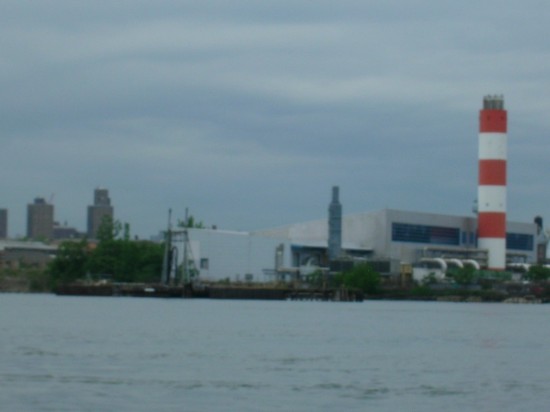
As planners look to revitalize the city’s waterfront, one environmental advocacy group says the mayor’s blueprint for change does not go far enough, and wants waterfront communities like Mott Haven to join its efforts.
The New York City Environmental Justice Alliance wants to persuade elected officials to improve the mayor’s initiative to clean up polluted waterways and make their banks more accessible to the public.
Last year, Mayor Michael Bloomberg and City Council Speaker Christine Quinn announced the launching of their Vision 2020 initiative for greening the city, in order to revive 22 waterfront communities over ten years. The plan calls for increasing public access to the city’s waterfront areas, adding waterborne transportation, and increasing economic opportunities.
But grassroots Environmental Justice Alliance, says the city is ignoring the likely effects climate change will have on shoreline neighborhoods vulnerable to storms and flooding, and says the city should act now to protect low-income residents, many of whom are uninsured, in the event of major weather events. Representatives from the group made their pitch to members at Community Board 2 at two June meetings.
“Hurricane Irene was much milder than projected,” community board member and managing director of the Hunts Point Economic Development Corp. Jeremie Sautter said after hearing one of the group’s presenters at a June 12 community board meeting. “It could have been bad. I encourage the city to put these measures in place.”
The Environmental Justice Alliance wants the city’s Planning Department, which is overseeing the mayor’s initiative, to adopt five measures it says would benefit residents of low-income, waterfront communities like Hunts Point and Port Morris, where many of the city’s heaviest polluting industries are located:
• Require storm risk assessment for all projects planned in coastal areas
• Mandate “safe and responsible” use of all hazardous and toxic materials
• Protect local jobs and businesses
• Protect and restore wetlands from the effects of pollution
• Require public waterfront access except where it is proven unfeasible
The public review process
By Fausto Giovanny Pinto
The city is updating its Waterfront Revitalization Program, which regulates and guides development and land use in the city’s costal zones, as part of Vision 2020.
Community Boards in neighborhoods along the city’s waterfront have 60 days to review and submit their comments on the city’s plan to the City Planning Commission.
The Borough President and the Borough Board, which is comprised of City Council members from the Bronx and all Bronx Community Board chairmen, have until July 31st to submit their own suggestions.
The Planning Commission and then the City Council can adopt the proposal with or without the additions, or discard it entirely.
Finally, the New York State Department of State and federal Department of Commerce then grant or deny the initiative.
City planners claim that gauging the risk from storms is a task beyond their means, said Juan Camilo Osorio, a policy analyst for the Environmental Justice Alliance. But San Francisco, among other major cities, conducts risk assessments as standard planning practice, and New York should, too, he argued.
The group’s executive director, Eddie Bautista, says the city should act decisively, and soon. Weather patterns are changing quickly and dramatically, he said, and the shape of the city’s coastline makes New York particularly vulnerable to storm surges.
“The frequency of these weather events is increasing,” he said. “We had two tornados in Brooklyn. In Brooklyn! We had Hurricane Irene last year and a couple of nor’easters.”
“When Katrina happened, it raised our consciousness,” he continued. “Louisiana was a heavy industrial area, and only now is it coming out how that was affecting the exposure to those chemicals.”
New Orleans and Miami are the only US metro areas at higher risk than New York City of taking a devastating hit from a hurricane, according to a state report released in 2005.
A spokeswoman from the city’s Department of Planning, Jovana Rizzo, declined to comment, other than to point out that the city’s Waterfront Revitalization Program calls for considering “the risks associated with coastal flooding based on climate change projections,” and ensure any new structures are built to withstand flooding.
Existing businesses will be exempt from those regulations, though, and Bautista says his organization wants them included.
But as the Alliance pushes for safeguards on the industrial waterfront, other environmentalists are concerned about too much industrial development on the Bronx’s rivers.
“We have to be careful when we develop the waterfront, not to overdevelop it,” said Adam Green, executive director of the boatbuilding and educational non-profit Rocking the Boat, which uses and works to improve the quality of the Bronx and East rivers in Hunts Point.
“We need to think of safety, and of the people and the environment. It’s the sort of thing where, how many trails do you cut in a forest before you destroy it?” Green asked.
For local workers on a hot summer day, there can never be enough waterfront access. On a recent afternoon, workers from the Terminal Co-op Market next door were lounging at Hunts Point Riverside Park during their lunch break. Terry Worthy, 50, who lives in Longwood, enjoyed a quick nap under a shady tree.
“We need more places like this,” he said. “Before this I used to sit on a bench outside my job.”
